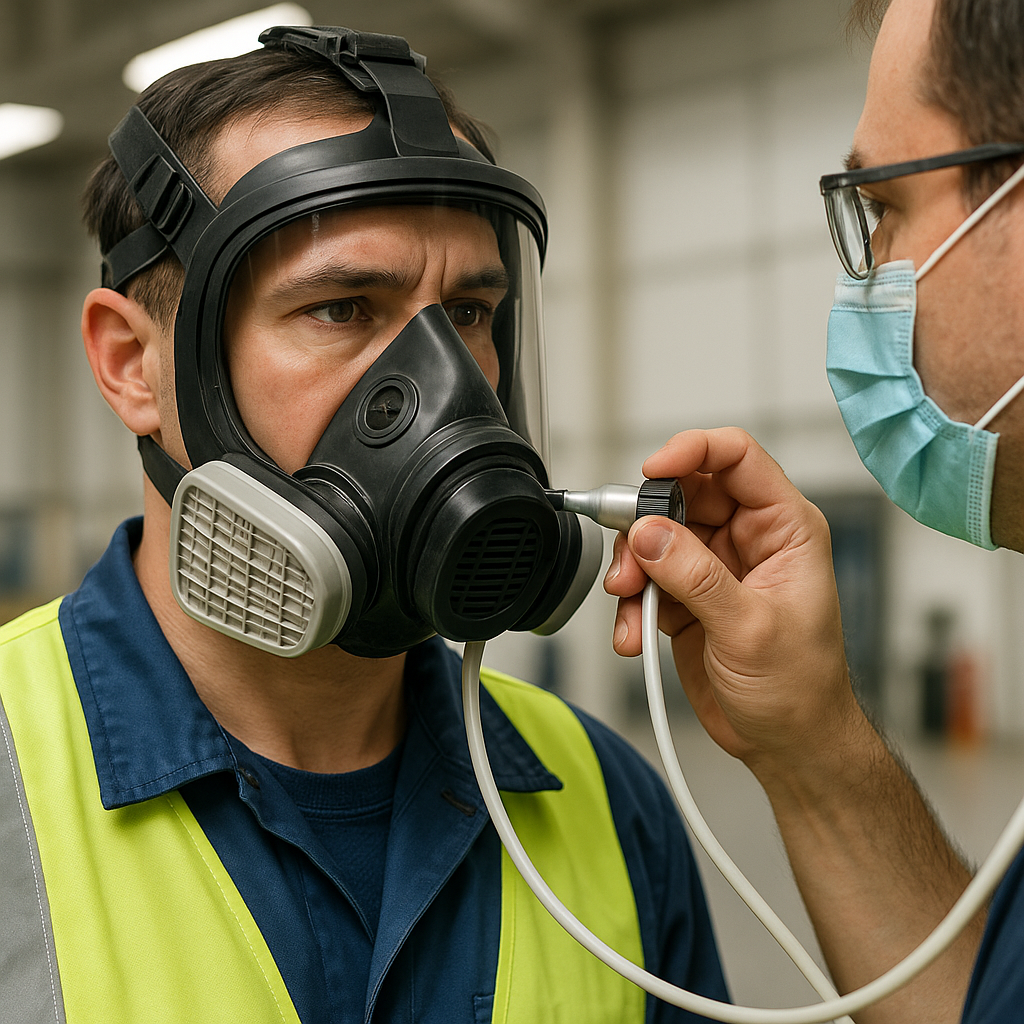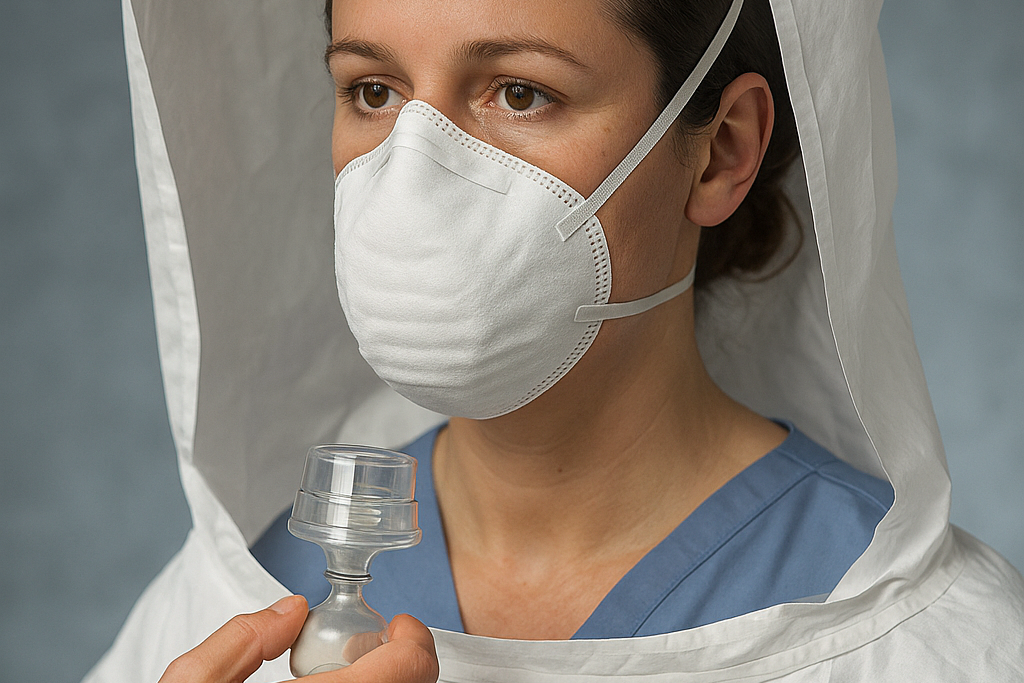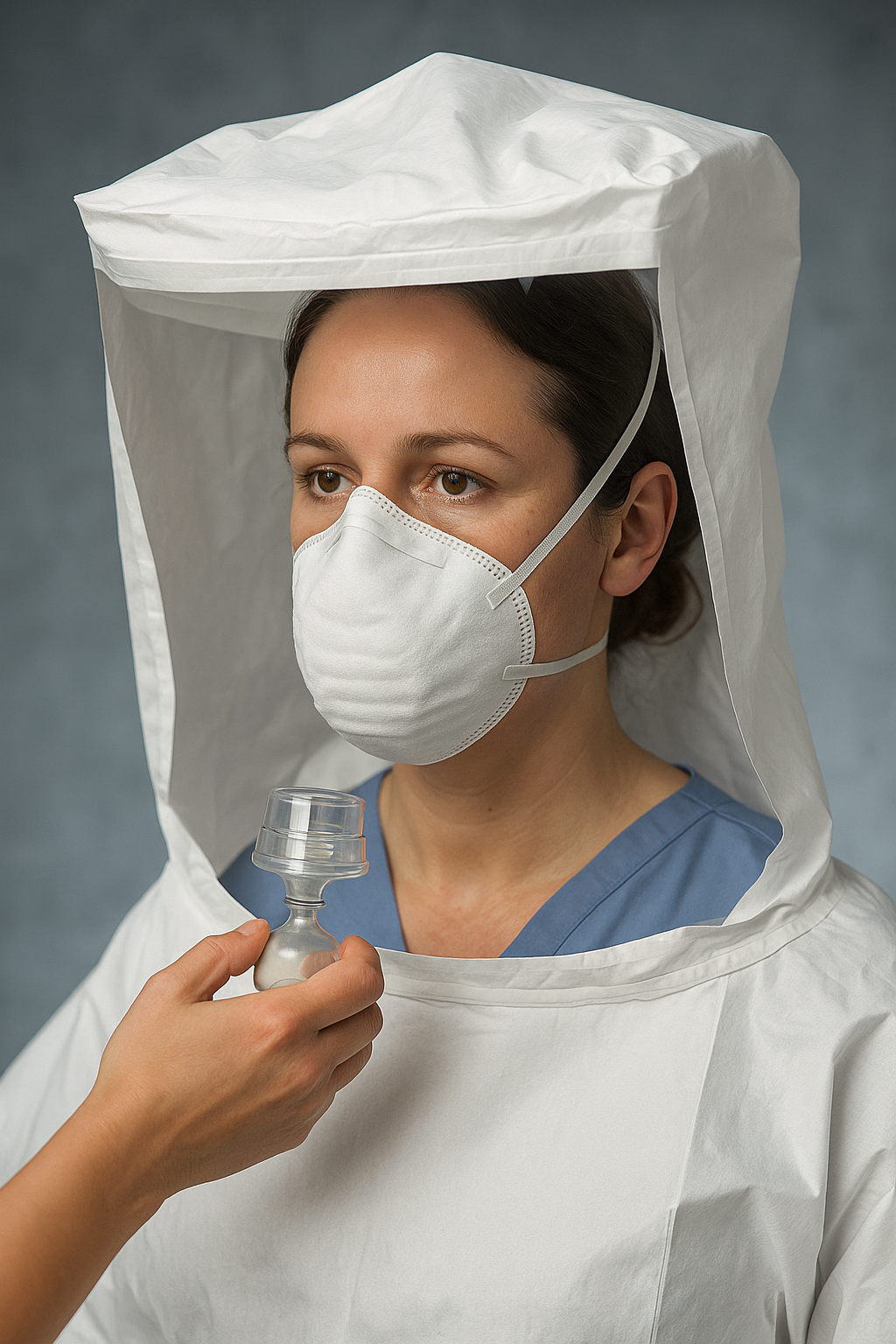Respirator Fit Testing is not just a compliance requirement—it’s a crucial step in safeguarding employee health, especially in industries where airborne hazards such as dust, fumes, vapors, or infectious agents are present.

- Respirator Fit Testing
- Why Respirator Fit Testing Is Essential
- Types of Respirator Fit Testing
- Key Steps in the Respirator Fit Testing Process
- Employer Responsibilities Under the Law
- Common Mistakes Employers Make
- How to Set Up a Respirator Fit Testing Program
- Maintaining Compliance Long-Term
- Final Thoughts on Respirator Fit Testing
Respirator Fit Testing
Employers need to understand that issuing a respirator alone isn’t enough. Without proper fit testing, workers may be operating under a false sense of protection.
Why Respirator Fit Testing Is Essential
Respirator Fit Testing ensures that a tight-fitting respirator seals correctly on the employee’s face, providing the level of protection intended by its design.
According to OSHA regulations, employers are required to perform this test before an employee uses a respirator for the first time and at least annually thereafter.
Failure to conduct fit testing can result in:
- Respiratory exposure to harmful substances
- Non-compliance penalties
- Increased incident risk
- Employee discomfort or misuse of PPE
Types of Respirator Fit Testing
Qualitative Fit Testing (QLFT)
This method relies on the user’s sensory reaction (taste, smell, or irritation) to a test agent such as saccharin or Bitrex. It’s primarily used for half-mask respirators or N95 respirators.
Quantitative Fit Testing (QNFT)
This approach uses an instrument to measure leakage around the face seal, providing numerical results. QNFT is necessary for full-face respirators and high-hazard situations where more precise protection is needed.

Key Steps in the Respirator Fit Testing Process
- Medical Evaluation
Before testing, employees must complete a medical questionnaire to ensure they are physically fit to wear a respirator. - Selection of Proper Respirator
Employees should try multiple sizes and models. The right respirator must fit their unique face shape and job environment. - Conducting the Fit Test
The employee wears the respirator while performing exercises like speaking, moving their head, and breathing deeply. The tester assesses if the respirator maintains its seal. - Recordkeeping
Employers must maintain a fit testing record for each employee including:- Date of the test
- Type of test used
- Model and size of the respirator
- Test results
Employer Responsibilities Under the Law
Under the Canadian Centre for Occupational Health and Safety (CCOHS), employers must:
- Ensure annual fit testing for each employee who requires a tight-fitting respirator.
- Provide training on proper use, maintenance, and limitations.
- Maintain written respiratory protection programs.
Additionally, employers should stay aligned with guidance from CSA Standard Z94.4 in Canada, or NIOSH and OSHA in the United States.
For organizations operating in Canada, resources like OHSE.ca also provide practical guides and policy templates for compliance.
Common Mistakes Employers Make
- Using a one-size-fits-all approach – Different workers have different facial structures.
- Skipping fit tests during new hires or role changes
- Neglecting to retest after weight loss/gain, facial surgery, or facial hair changes
- Relying only on self-assessment instead of professional testing
These oversights can lead to serious health consequences and regulatory actions.
How to Set Up a Respirator Fit Testing Program
Here are essential components for an effective in-house or third-party fit testing setup:
| Component | Description |
|---|---|
| Trained Testers | Staff or vendors certified to perform qualitative/quantitative tests |
| Approved Equipment | OSHA or CSA-compliant respirators and test kits |
| Scheduling System | Track and notify employees of annual testing requirements |
| Education & Documentation | Provide info sessions, manuals, and record logs |
For companies handling chemicals, biologicals, or dust (such as in auto shops, healthcare, or construction), this program is critical to maintaining safe air quality practices.
If you’re managing workplace respiratory protection, it’s also vital to understand proper waste segregation and VOC exposure risks, as both affect respiratory safety in shared environments.
Maintaining Compliance Long-Term
Fit testing isn’t a one-time box to tick. Employers must:
- Repeat tests annually
- Update training
- Evaluate new workplace hazards
- Monitor respirator stock and condition
- Keep policies and documentation up to date
Pro tip: Include respirator fit testing as part of your health and safety onboarding checklist to build a culture of compliance from day one.
Final Thoughts on Respirator Fit Testing
Respirator Fit Testing is a legal, ethical, and practical necessity in any workplace where respiratory hazards exist. A well-executed fit testing program doesn’t just check the box—it protects lives.
Employers who take fit testing seriously not only meet regulatory standards but also foster a safer, more confident workforce.


No comments yet